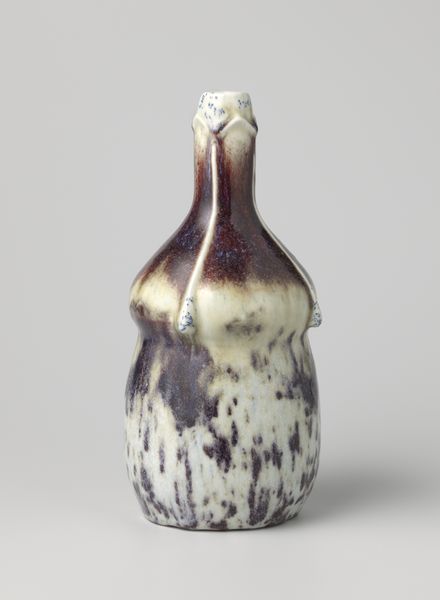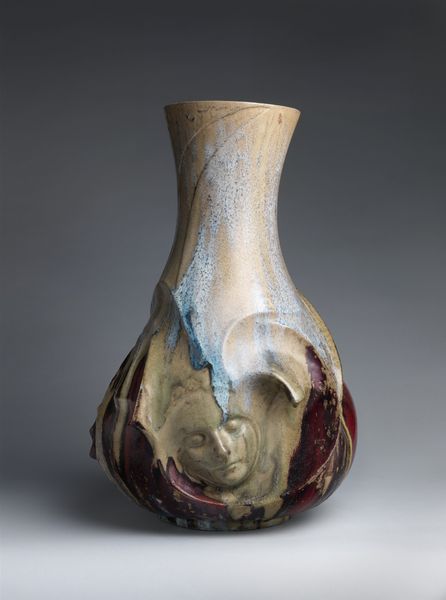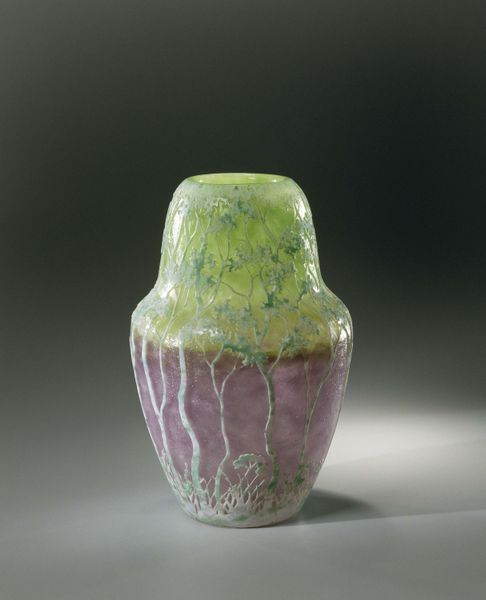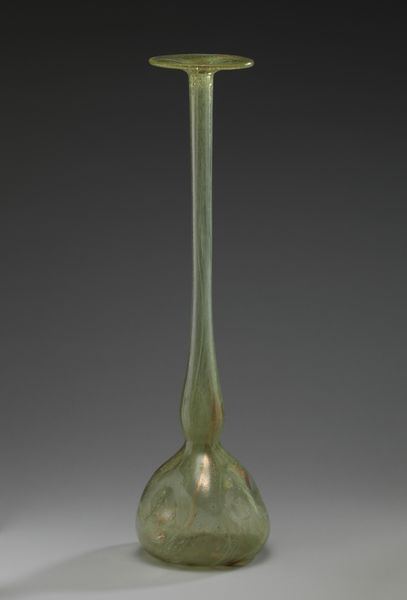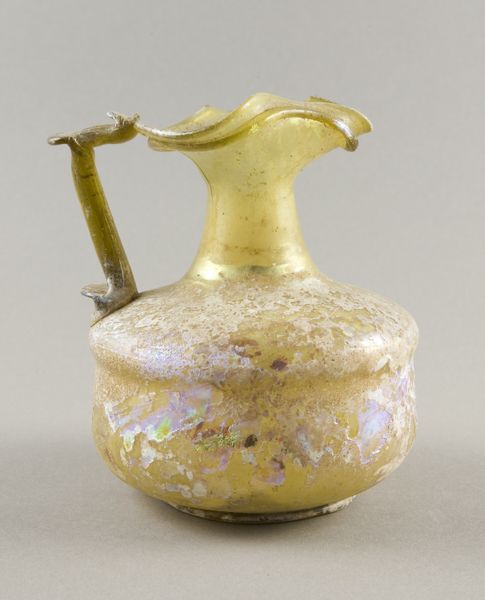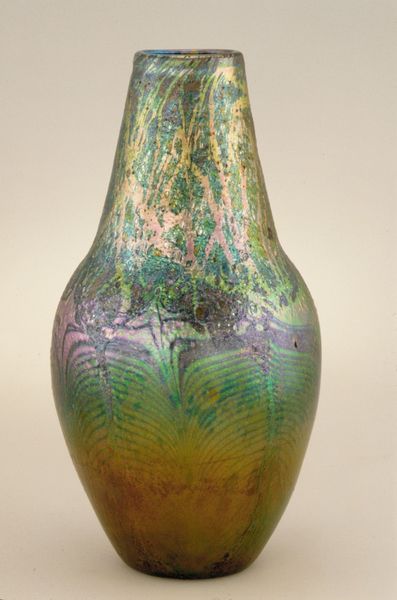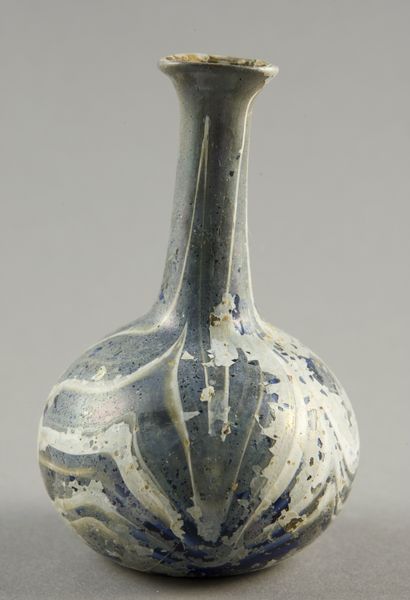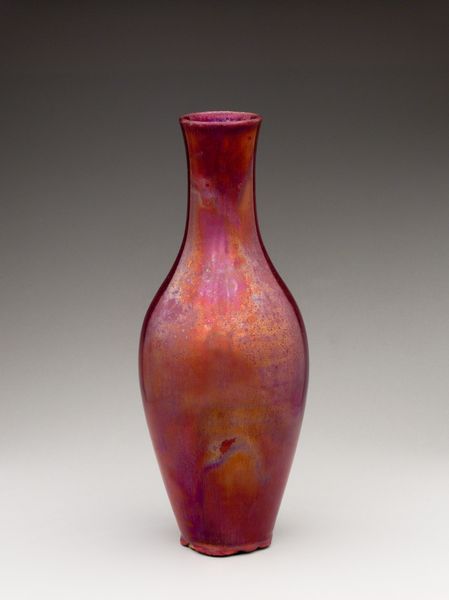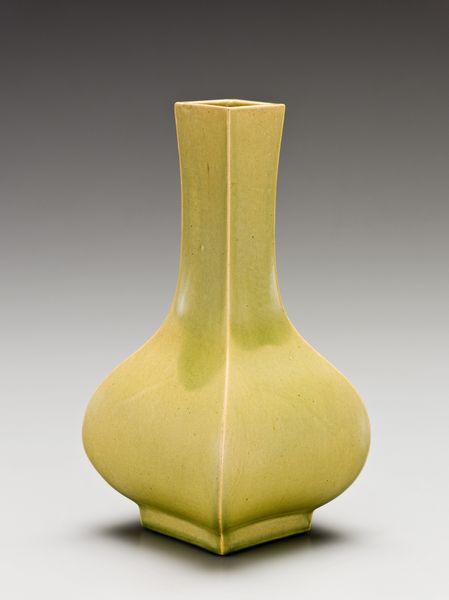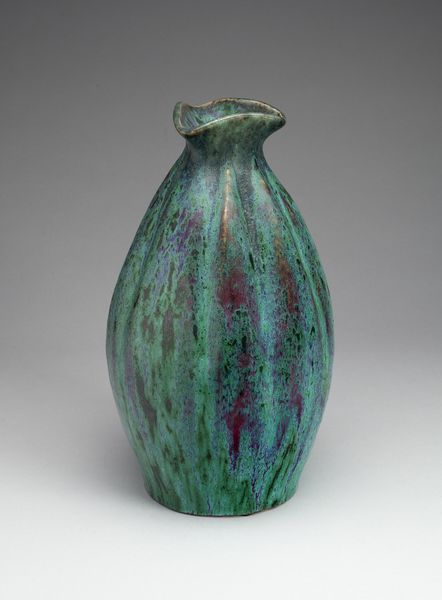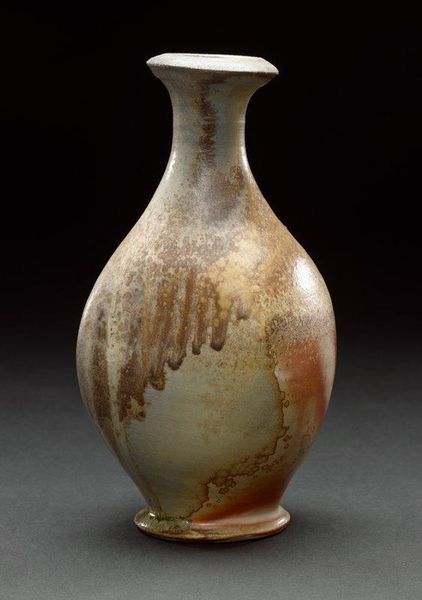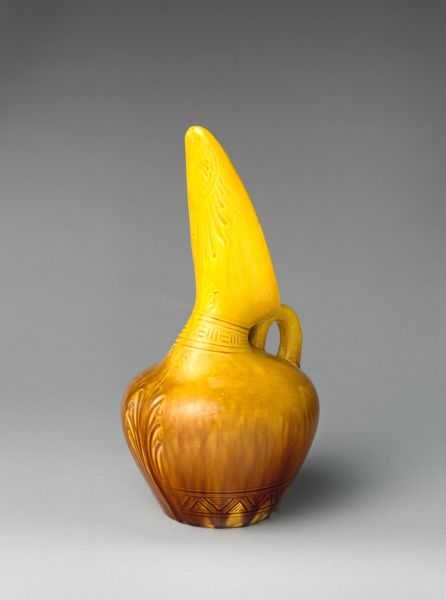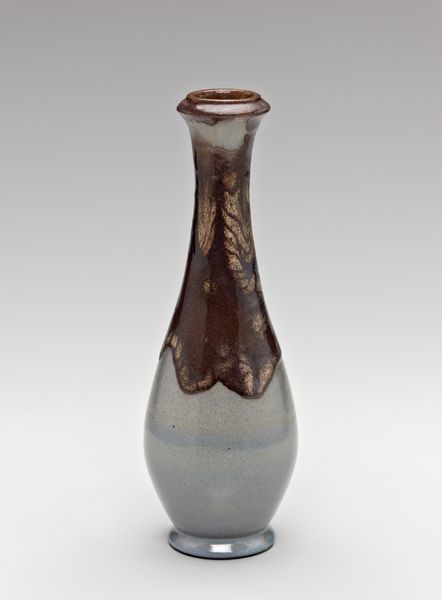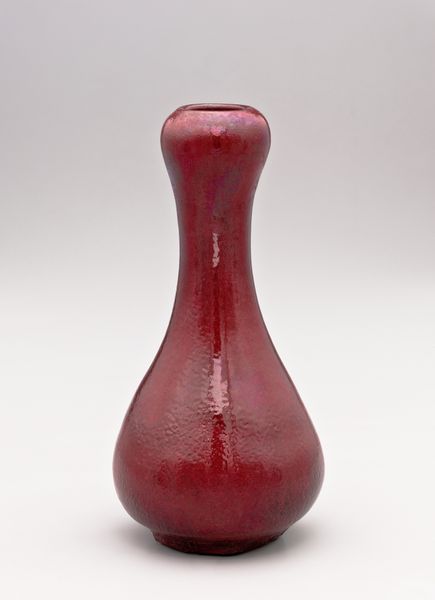
ceramic, glass
#
ceramic
#
glass
#
ceramic
Copyright: Public Domain
Curator: Here we have an intriguing vase, crafted likely in the early 20th century. Its media is a combination of ceramic and glass. Editor: It's quite striking. The color palette gives me an impression of a landscape viewed through fog. It is grounded yet also quite ethereal. Curator: These types of decorative objects were incredibly popular in middle-class homes around the turn of the century, symbols of taste and domestic tranquility. Collecting such things signaled a family's place in a broader social order. Editor: Did this ideal of domesticity extend across class and racial lines, or was it a more exclusive vision? I wonder how that era’s marginalized communities engaged with or resisted these mainstream displays. Curator: Absolutely, the rise of industrialization allowed for mass production, but access to luxury goods was sharply limited by class. Consider how these idealized spaces often silenced working-class labor that enabled these wealthy lifestyles. Editor: The choice of these specific colors also contributes to its visual power. The juxtaposition of the light yellows, blues, and earthy tones – what could that layering of visual textures suggest about societal structures or power dynamics at the time? Curator: This piece resonates deeply with the period's aesthetic concerns. Such techniques in glassmaking emerged with an industrial drive, yet makers often yearned for a romantic connection to handmade artisanal traditions. Editor: But it’s more than aesthetics. Consider what kind of statements can be made with ceramics in general, by marginalized communities looking to craft tools or convey political statements using readily available material? It represents an incredibly democratizing movement, in comparison to its richer counterpart. Curator: A really pertinent point. Looking closely at an object, understanding the landscape that gave rise to its creation is so crucial. Editor: It reminds me that even domestic art can be a powerful vehicle to negotiate identity and advocate change. We only have to reimagine what domesticity means today, beyond the status quo.
Comments
No comments
Be the first to comment and join the conversation on the ultimate creative platform.
